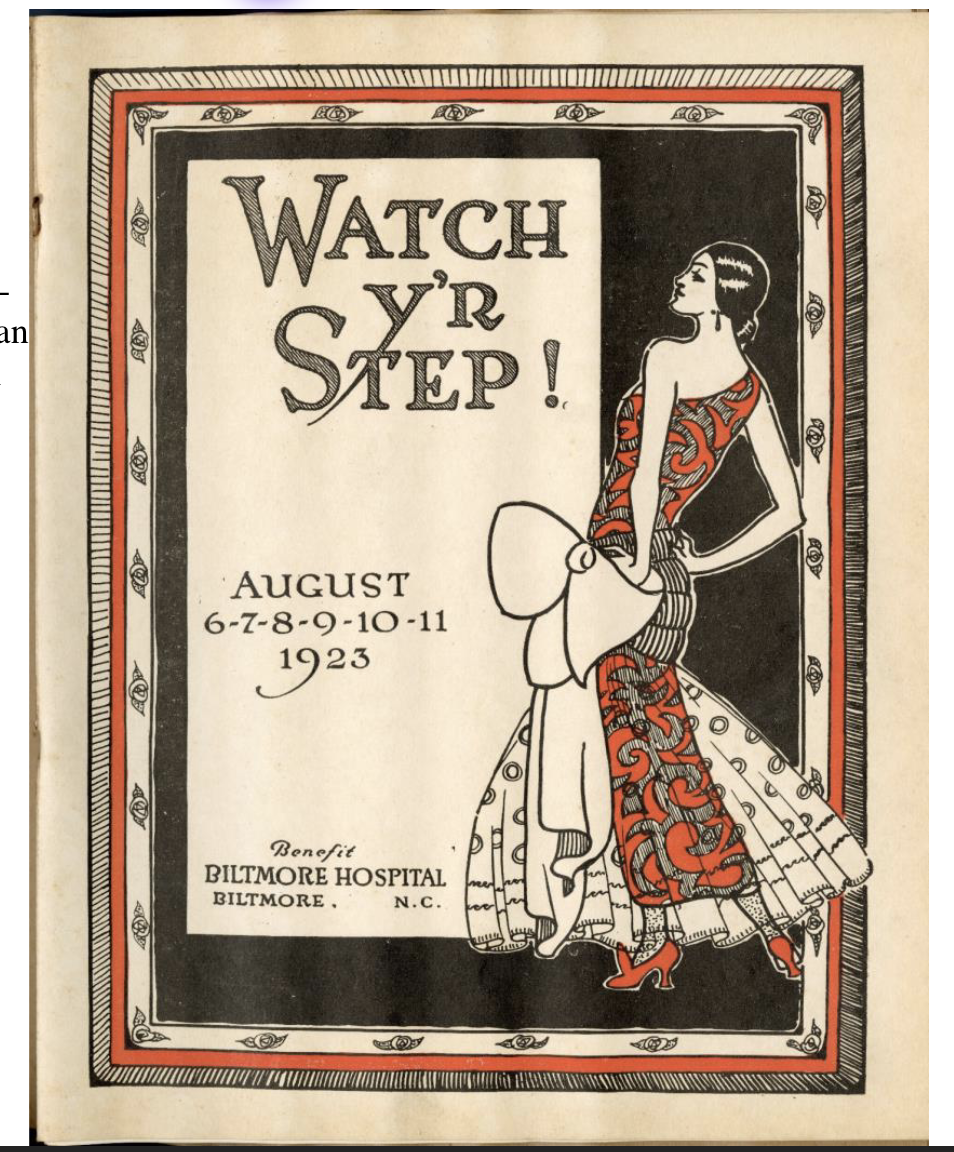By Joan Cope
It’s likely that the people perusing the Antique Tobacco Barn near Biltmore Village don’t realize that it is on the site of what was an enormous dance hall, the Kenilworth Hippodrome.
The Hippodrome opened on the banks of the Swannanoa River in 1923. Its 5,000-square-foot hardwood dance floor had room for 200 couples, seating for over 1,000 spectators, parking, a special ventilation system and advanced lighting that could flood the entire building. It was a dance palace indeed. It was advertised as the “biggest, coolest, brightest floor in the state!”
At the time, the local paper called it the Temple of Terpsichore, referring to the Greek muse of dance and chorus.
It all started when J.M. Chiles of the Kenilworth Development Co. announced in 1923 plans to build the Kenilworth Riding Academy (later called the Hippodrome) that could house a one-ring circus and a riding academy to serve the nearby Kenilworth Inn, as well as other pageants and carnivals. It was envisioned as a fairground for Asheville. He also planned parking for 75 automobiles for inn guests and hired well-known equestrian Alfred Eades to design the building.
Local newspapers said the 95-by-195-foot building would cost $25,000 to $30,000. Details included “restrooms for ladies,” an office for management, showers for riders, “including an attractive room for businessmen desiring to have riding habits at hand.”
Jan Garber, a popular band leader of the time, oversaw the floor design that could accommodate the size of crowds that had attended his recent performances. The floor was installed in pieces so it could be removed for other events.
Based on advertisements at the time, orchestras from around the country played there. One dance featured dueling orchestras, one at each end of the Hippodrome. Dances included the Confetti Dance and the College Dance, the latter billed as the last dance before college men had to return to campus at the end of the summer.
The Hippodrome held movie-star look-alike dances called The Movie Ball, Halloween dances with contests for “appropriate costumes” and exhibitions of professional dancers.
Cornelia Vanderbilt staged a six-day “Watch Y’r Step” benefit for a new hospital in Biltmore, while other benefits were held for vaudeville players, widows and orphans and for “an invalid” named Nell Lipe who, with the help of friends, was raising money for a “new rolling chair.”
Ads for dances in 1924 often noted there was a 20-cent “War Tax” in addition to the admission fee. The venue hosted sporting events with boxing featured prominently. There was an indoor track meet called the Winter Relay Carnival in 1924 as well as archery events and dog shows.
New owners
The Kenilworth Hippodrome Amusement Co., consisting of local investors, took a controlling interest of the Hippodrome in November 1924. The company planned to renovate the Hippodrome so it would be open year-round for entertainment, including events in connection with the movies being shown at the Asheville Imperial Theater. For example, a ball was planned in conjunction with the movie “Peter Pan.” Harry Houdini is one of the big-name performers who appeared under the new ownership.
Part of the Hippodrome was divided into 18 stalls with different dining themes, including Chinese, Egyptian, Turkish and Japanese rooms. In 1925, a movie production company was founded to try to make Asheville a Hollywood of the South. Newspapers reported in March that the Hippodrome was going to be converted into a movie production studio. But instead, it became the home of a cavalry division of the National Guard, and then a tobacco warehouse. There was a brief renaissance as a dance hall for square dancing and clogging during World War II, but it burned down in 1947 and was later rebuilt into what became the Antique Tobacco Barn we know today.



Great historical article. Thank you for writing this.